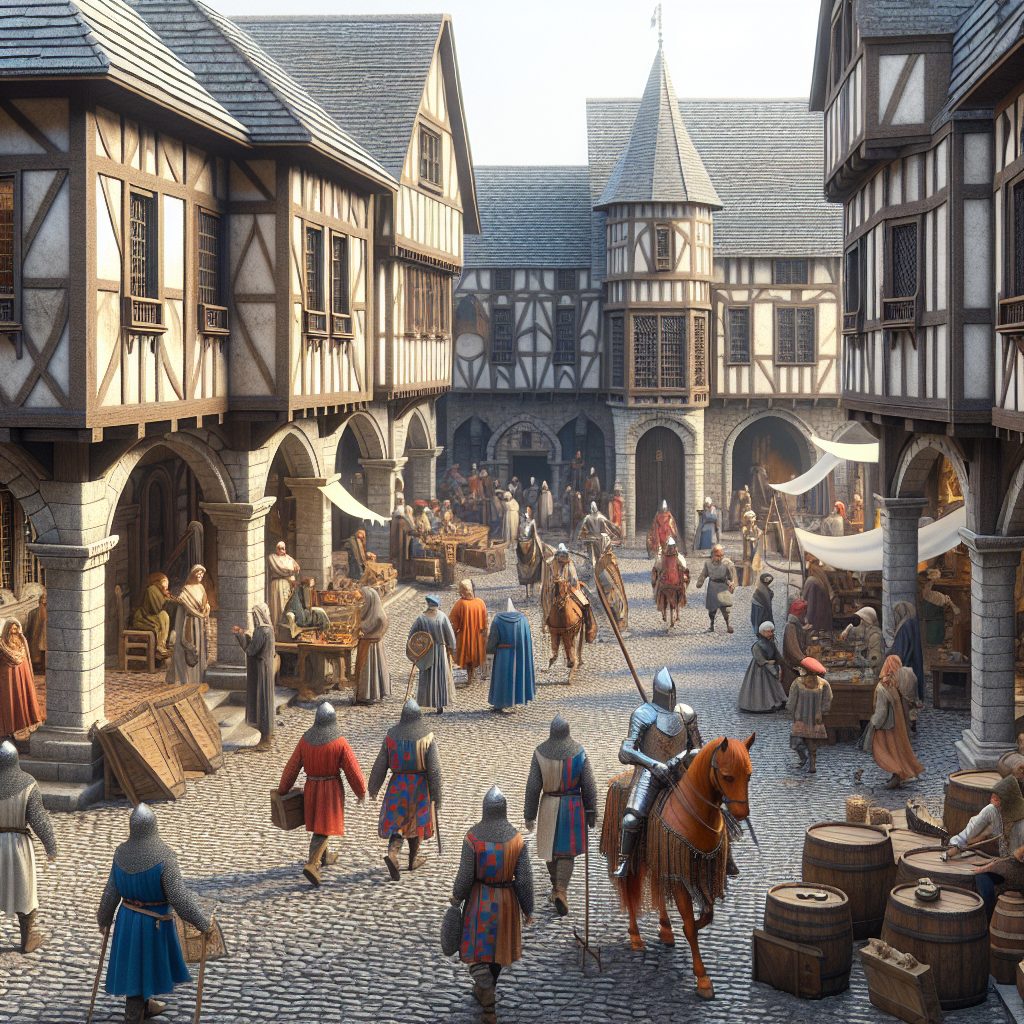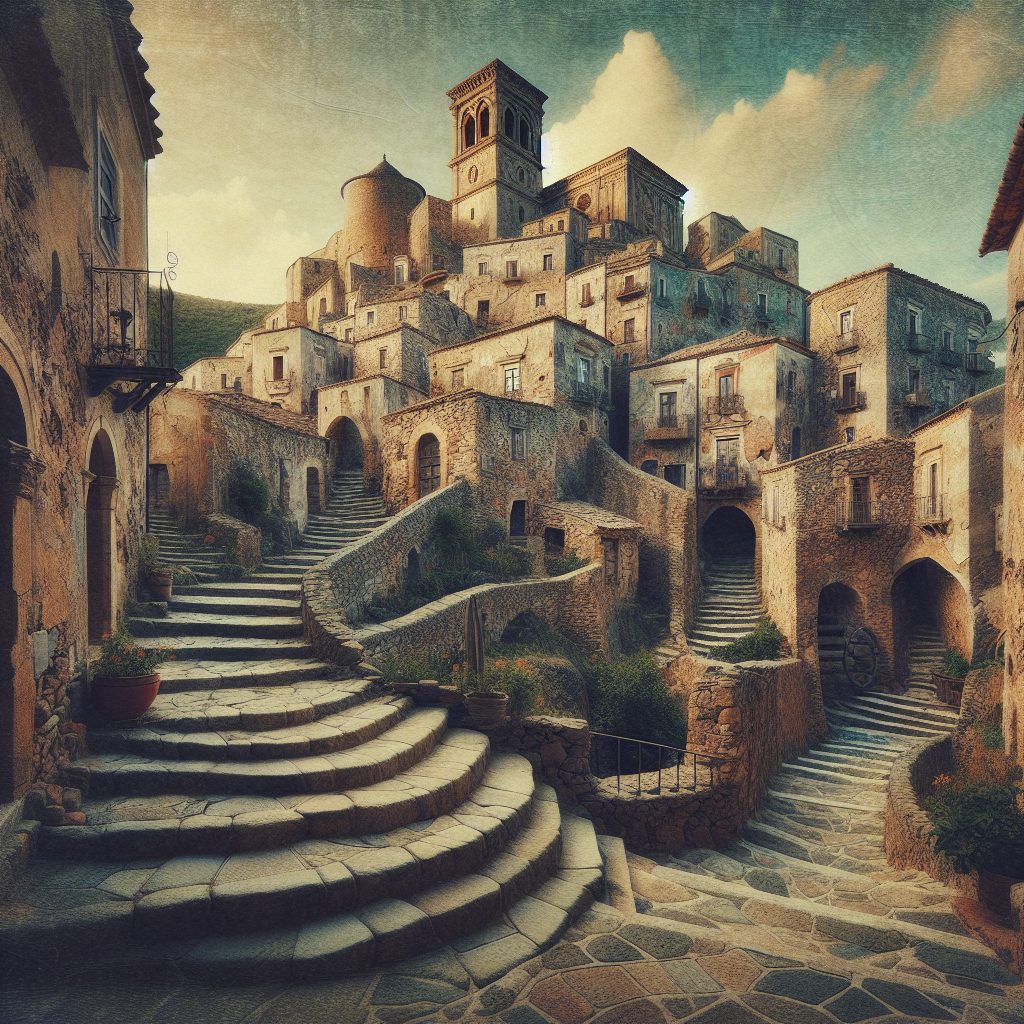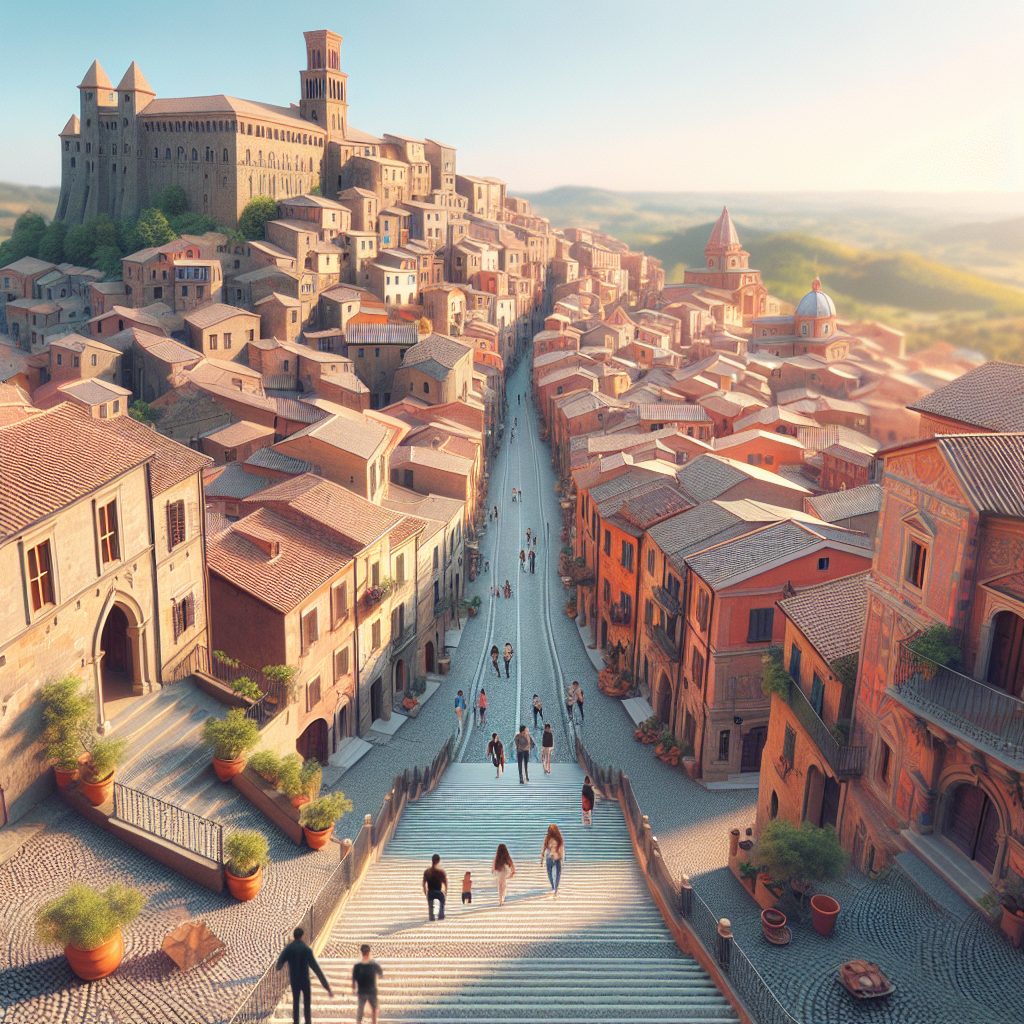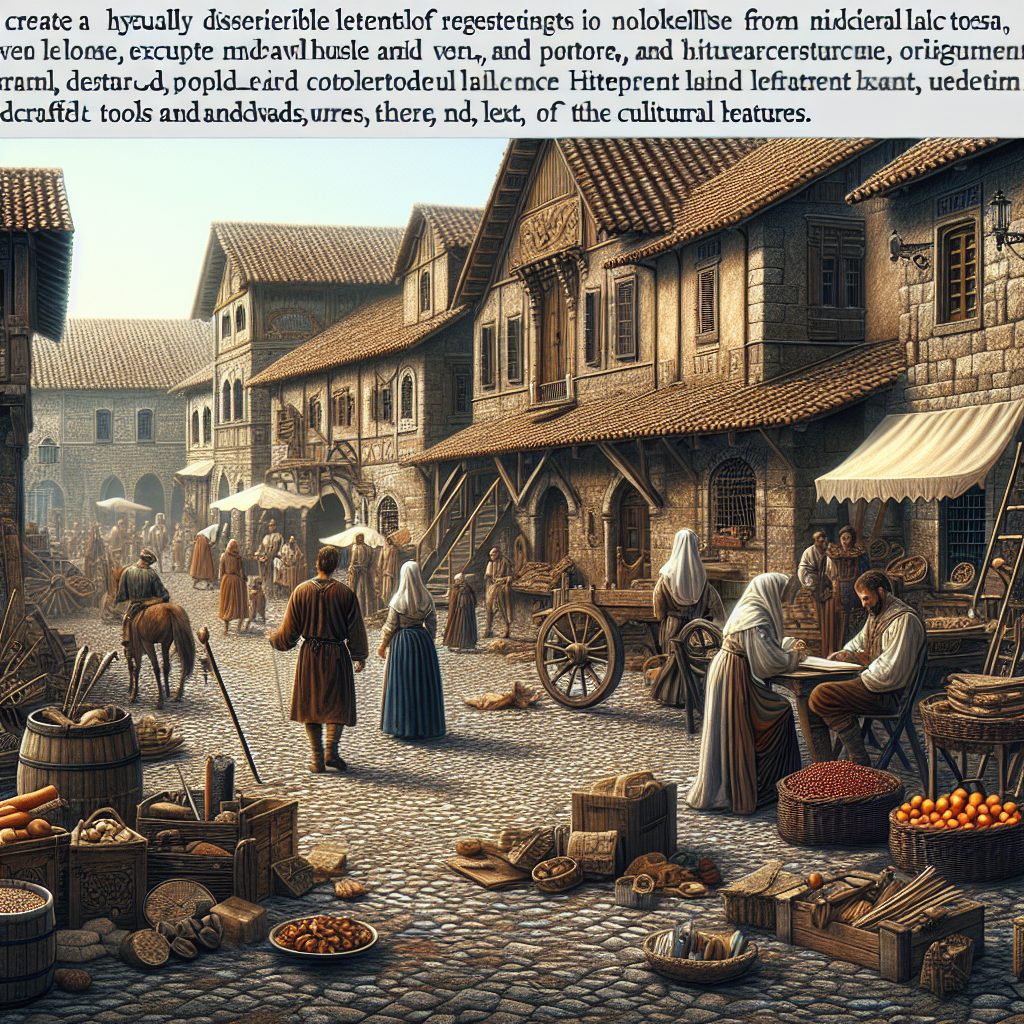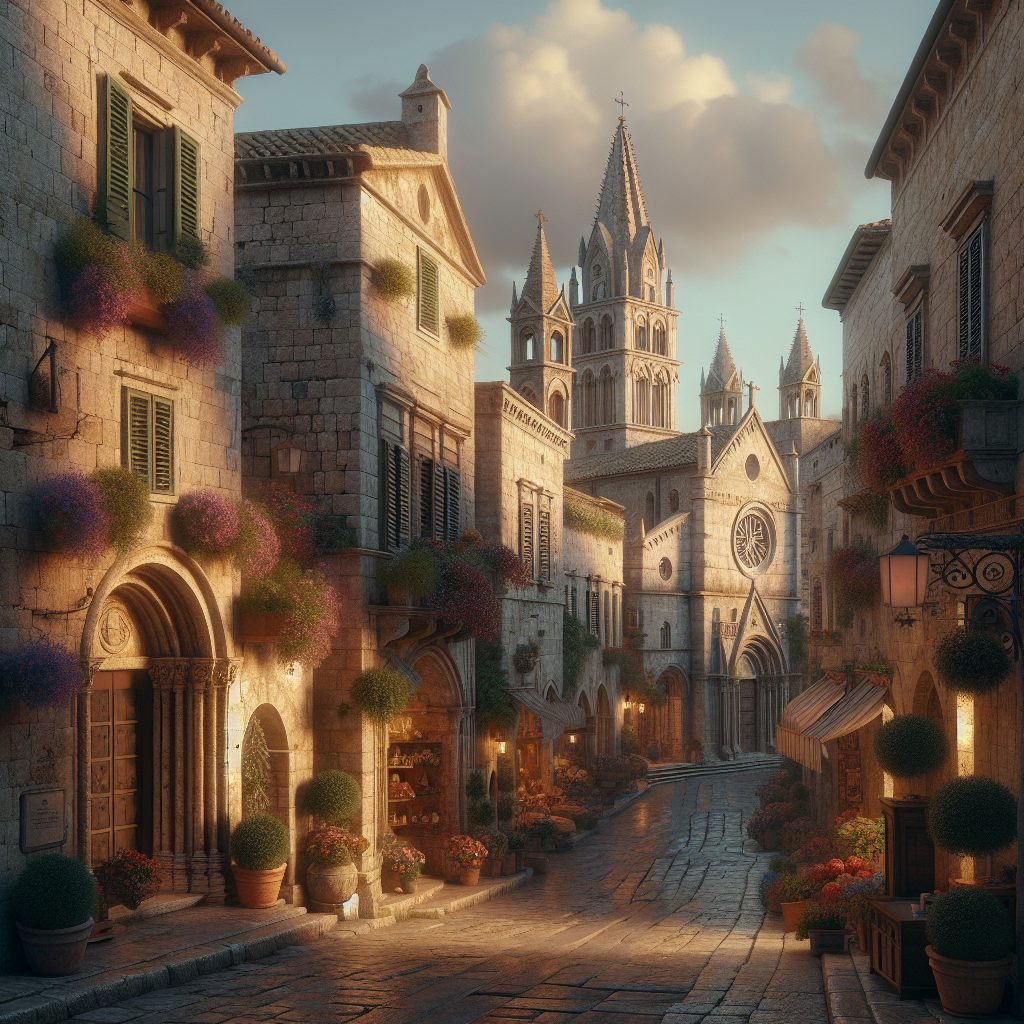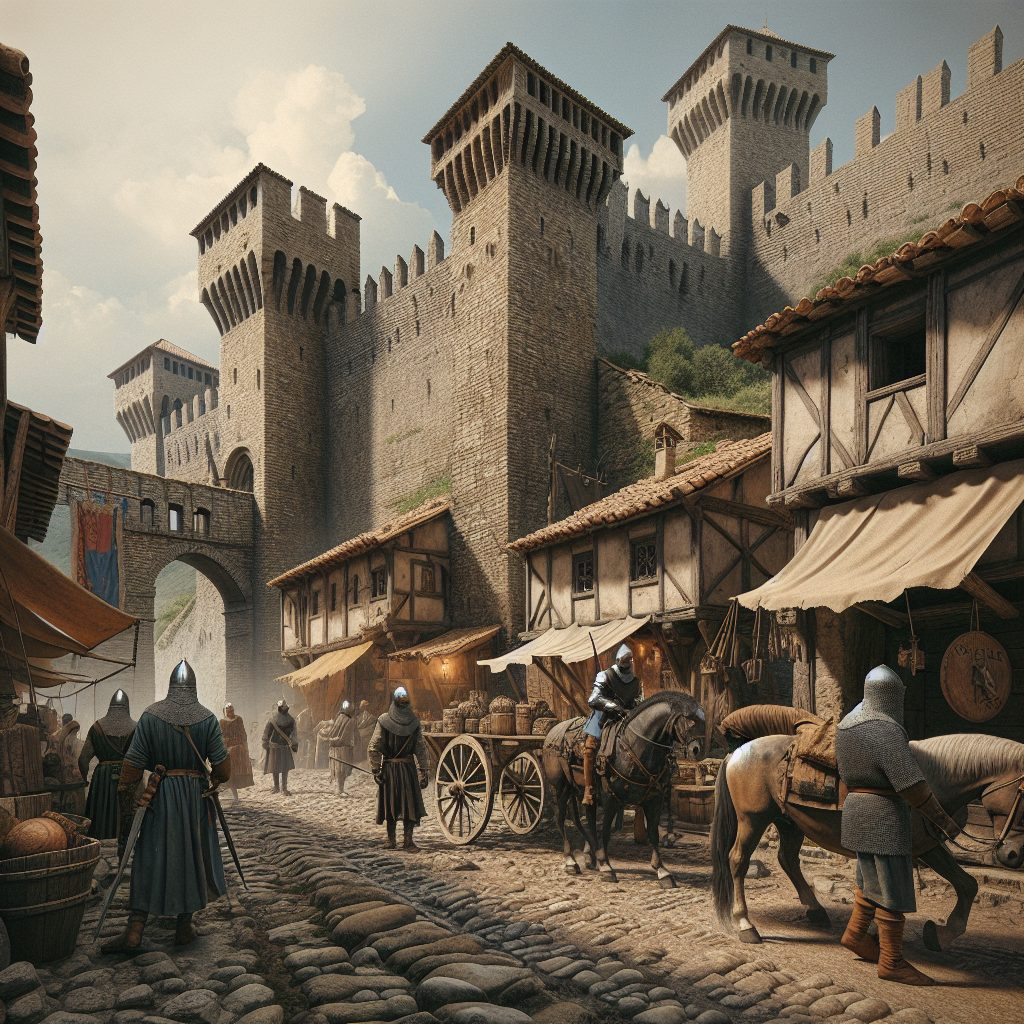Bosa Medieval Town, nestled in the picturesque region of Sardinia, Italy, is a treasure trove of historical events and cultural significance. With its origins dating back to the 11th century, this enchanting town bears witness to the rich tapestry of medieval life. At its heart lies the imposing Castle of Serravalle, a testament to the strategic importance of Bosa during the Middle Ages. The castle played a pivotal role in defending the town against pirate raids and foreign invasions, leaving an indelible mark on its architectural landscape. Moreover, Bosa’s vibrant history is further accentuated by its narrow cobbled streets, medieval houses, and splendid churches, all of which bear testament to the town’s colorful past.
One of the most significant impacts of Bosa’s historical events is the preservation of its medieval charm. As visitors wander through its meandering streets, they are transported back in time, immersing themselves in a bygone era. The well-preserved Castle of Serravalle, with its imposing walls and defensive towers, offers a glimpse into the strategic importance of Bosa during the Middle Ages. The town’s unique features, such as the colorful facades of traditional houses and the architectural grandeur of the Cathedral of Bosa, serve as a visual testament to the town’s rich cultural heritage.
In the upcoming sections of this article, we will delve deeper into the historical events that shaped Bosa Medieval Town, unraveling the tales of sieges, noble families, and religious fervor. We will explore the key takeaways from these events, shedding light on the significance of Bosa’s medieval history and its impact on the town’s identity today. Join us as we embark on a fascinating journey through time, unearthing the mysteries and marvels of Bosa Medieval Town.
Key Takeaways
1. Bosa is a medieval town located on the west coast of the island of Sardinia, known for its rich historical events and captivating architecture.
2. The town’s history dates back to the Phoenician era, with evidence of human settlements as early as the 9th century BCE. It later became an important trading center under Roman rule and subsequently experienced Byzantine and Moorish influences.
3. Bosa’s medieval era began in the 11th century when it became a flourishing fortified town under the rule of several noble families. Its strategic position along the Temo River facilitated trade and the development of important industries such as tanning and fishing.
4. The Malaspina Castle, built in the 12th century and perched on a hilltop overlooking Bosa, stands as a testament to the town’s medieval heritage. Its iconic red brick façade and impressive battlements attract visitors from around the world.
5. Throughout the centuries, Bosa has preserved its historical charm, with its picturesque maze of narrow streets, colorful houses, and ancient palaces. Today, it continues to captivate visitors with its historical landmarks, artisan workshops, and vibrant cultural events.
What are the historical events of Bosa Medieval Town?
1. The Foundation of Bosa
The history of Bosa Medieval Town begins with its foundation, which dates back to the Phoenician period. The town was established by the Phoenicians around 530 BC and served as an important trading port in ancient times.
2. Roman Rule
During the Roman era, Bosa became a prosperous town and was known as Bosa Carales. It served as the capital of the province of Caralis, present-day Cagliari. The Romans left their architectural imprints in Bosa, with the remains of a Roman bridge and a necropolis still visible today.
3. Byzantine Influence
With the decline of the Roman Empire, Bosa fell under Byzantine rule. The Byzantines strengthened the fortifications of the town and built a castle, which still stands tall on the hill overlooking Bosa. This castle played a crucial role in protecting the town from invasions.
4. Saracen Invasions
During the 11th and 12th centuries, Bosa faced numerous invasions from Saracen pirates. These raids led to significant destruction and prompted the construction of more defensive structures, such as watchtowers along the coast. The remnants of these towers can still be seen today.
5. Catalan-Aragonese Rule
In the 14th century, Bosa came under the rule of the Catalan-Aragonese Kingdom. This period marked the beginning of a flourishing cultural and artistic era for the town. Many notable buildings, including the Cattedrale dell’Immacolata and the Church of San Pietro Extramuros, were constructed during this time.
6. The Malaspina Family
The Malaspina family, a noble Italian dynasty, gained control of Bosa in the 15th century. They further fortified the castle and the town, leaving behind remarkable architectural legacies. The Malaspina Castle is now one of the main attractions of Bosa.
7. Modern Era
In the 19th and 20th centuries, Bosa underwent various changes due to modernization and economic developments. The town’s medieval charm, however, has been preserved through careful restoration and conservation efforts. Today, Bosa Medieval Town is a popular tourist destination, offering a glimpse into its rich historical past.
8. Explore Bosa Medieval Town’s History
- Visit the Malaspina Castle and learn about its fascinating history.
- Stroll through the ancient streets of Bosa and admire the well-preserved medieval architecture.
- Discover the Roman bridge and the nearby archaeological site.
- Take a boat trip along the coast to explore the watchtowers and imagine the defensive struggles against Saracen pirates.
- Step inside the Cattedrale dell’Immacolata and marvel at its stunning interior.
- Learn about the Catalan-Aragonese influence by visiting the Church of San Pietro Extramuros.
- Attend historical reenactments or festivals that showcase Bosa’s medieval past.
- Indulge in local cuisine and try traditional dishes that have been passed down through generations.
So, what are the historical events that shaped Bosa Medieval Town?
Bosa’s history comprises its foundation by the Phoenicians, Roman rule, Byzantine influence, Saracen invasions, Catalan-Aragonese rule, the reign of the Malaspina family, and its transformation in the modern era. Explore Bosa’s historical wonders, from the castle to the ancient streets, and immerse yourself in the rich tapestry of its past.
Frequently Asked Questions
1. What are some historical events that took place in Bosa Medieval Town?
Bosa Medieval Town is rich in historical events, such as the construction of the Castle of Serravalle in the 12th century and the issuance of the first charter in 1112.
2. How important is the Castle of Serravalle in Bosa Medieval Town’s history?
The Castle of Serravalle holds great significance in the history of Bosa Medieval Town. Built in the 12th century, it served as a strategic stronghold for various ruling families and witnessed several battles throughout the centuries.
3. Were there any notable figures associated with Bosa Medieval Town’s historical events?
Yes, there were notable figures associated with Bosa Medieval Town’s historical events, such as Mariano IV of Arborea, who played a pivotal role in the town’s history as the judge of Arborea in the 14th century.
4. How did Bosa Medieval Town influence the region’s culture?
Bosa Medieval Town has greatly influenced the region’s culture through its architectural heritage, traditional festivals, and preservation of medieval traditions and crafts.
5. Are there any museums or historical sites in Bosa Medieval Town?
Yes, Bosa Medieval Town boasts various museums and historical sites, including the Museum Casa Deriu, where visitors can explore artifacts and objects showcasing the town’s history.
6. Has Bosa Medieval Town undergone any restoration or preservation efforts?
Yes, Bosa Medieval Town has undergone extensive restoration and preservation efforts to maintain its historical charm and ensure the conservation of its medieval architecture.
7. Are there any guided tours available to learn more about Bosa Medieval Town’s historical events?
Absolutely! There are guided tours provided by local experts who offer in-depth insights into the historical events and significance of Bosa Medieval Town.
8. Are there any annual events or festivals that celebrate Bosa Medieval Town’s history?
Yes, Bosa Medieval Town hosts several annual events and festivals, such as the Festa di Nostra Signora di Regnos Altos, which honors the historical and cultural heritage of the town.
9. Can visitors participate in any medieval-themed activities in Bosa Medieval Town?
Visitors have the opportunity to participate in various medieval-themed activities, including historical reenactments, medieval feasts, and workshops focusing on traditional crafts and skills.
10. How can I explore Bosa Medieval Town’s historical events on my own?
To explore Bosa Medieval Town’s historical events independently, you can visit the town’s landmarks, museums, and historical sites, following a map or guidebook that provides information about its history.
Final Thoughts
Exploring the historical events of Bosa Medieval Town immerses you in a captivating journey through time. The town’s rich heritage, from the Castle of Serravalle to its notable figures, offers a unique glimpse into medieval life and the cultural influences that shaped the region.
Whether you wander through its cobblestone streets, join in on the vibrant festivals, or appreciate the preservation of its medieval architecture, Bosa Medieval Town leaves a lasting impression. Its historical events continue to weave together a tapestry of stories, inviting visitors to become part of its living history.

